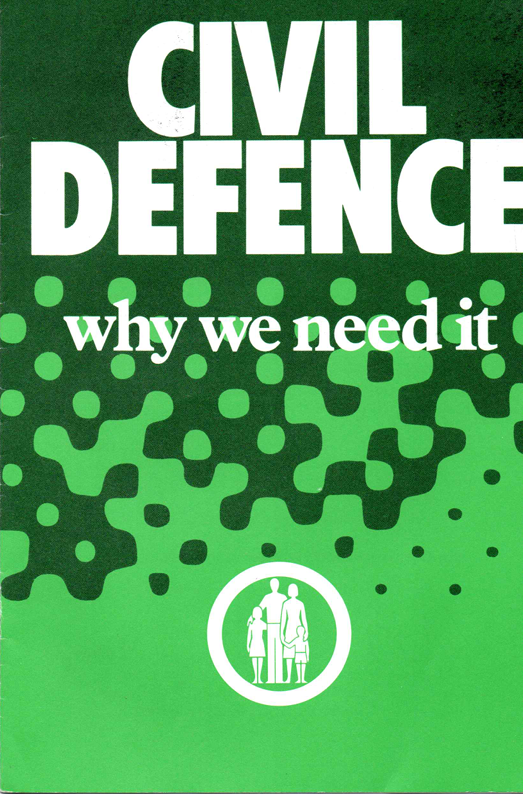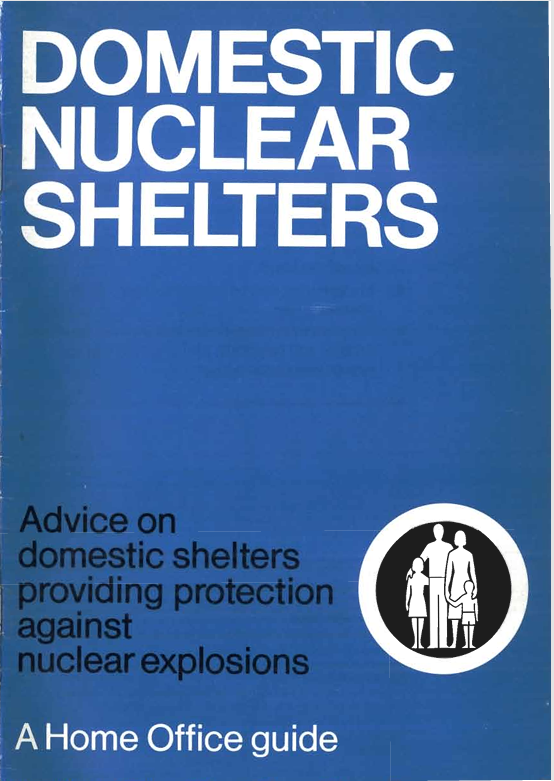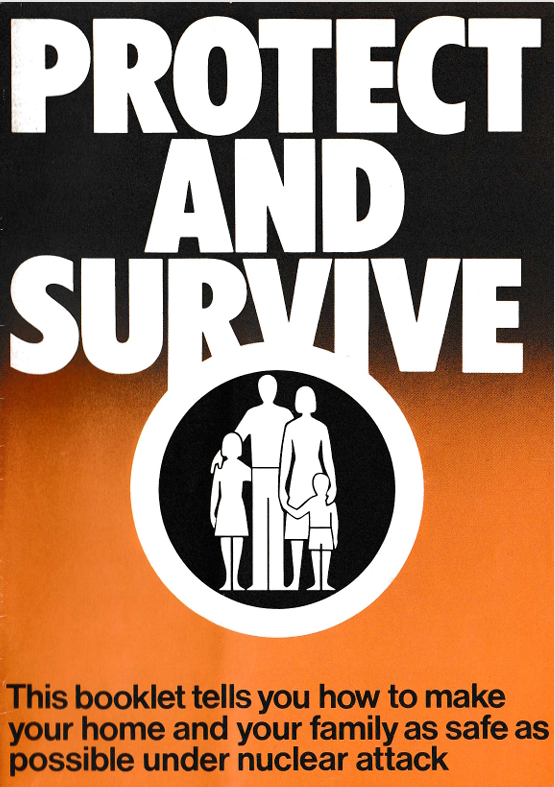Protect and Survive
Following the disbandment of the Civil Defence Corps, Industrial Civil Defence Service, Auxiliary Fire Service and National Hospital Service Reserve, in 1968, little information relating to civil defence was available to the general public, except for the WVS/WRVS "1 in 5" campaign.In the late 1970s and early 1980s an attempt was made by the government to rectify the situation, the result was "Protect and Survive", which was the title, both of a booklet, and a Public Information Film series produced by the British government, dealing with emergency planning for a nuclear war.
Initially it was intended that the booklet would be issued during any period of international tension suggesting the possibility of war. If such an attack had been deemed likely by the Government during any period of international crisis, a copy of the "Protect and Survive" booklet would have been distributed to every home in the UK, and the films would have been transmitted on domestic television. Due to public pressure it was made available to the public in 1983. The films were not shown.
The purpose of the programme was to provide members of the public with instructions on how to protect themselves and survive a nuclear attack. The booklet and the films detailed a series of steps to be undertaken by the public to improve their chances of survival during a nuclear attack. These included the recognition of attack warning, fallout warning, and all-clear signals, the preparation of a home "fallout room" and the stockpiling of food, water, and other emergency supplies.
"Protect and Survive" was simply designed, easy to understand, and similar to the advice of most other emergency planning authorities, in the West, of the time. The basic content of both the booklet and the films differed very little from that in "Civil Defence Handbook No 10", and of the Civil Defence Bulletins from the 1960s. In the USA a number of similar programmes were produced the most famous being "Duck and Cover" which was targeted at primary school children. In the opinion of some contemporary critics, however, the "Protect and Survive" films were deeply and surprisingly fatalistic in tone.
"Duck and Cover" (9m:20s)
Civil Defence, why we need it
In 1980, the government also published "Civil Defence, why we need it". It was sent to every household. If people thought it was to be a precursor to the re-launch of a civil defence organisation, they were mistaken. It said that civil defence was to be placed in the hands of local authority Emergency Planning Officers, the voluntary organisations (British Red Cross, St. John Ambulance, St Andrews Ambulance, the Radio Amateur Emergency Network (RAYNET), and WRVS), volunteer local authority Scientific Advisers, the UKWMO and the Royal Observer Corps. A few local authorities improved or updated their bunkers, but the reality was that it was largely only the ROC and UKWMO who continued with their training in a meaningful manner.
Domestic Nuclear Shelters
In 1981 the Home Office published
a guide booklet on "Domestic Nuclear Shelters". Although this could
be purchased from Her Majesty's Stationery Office, virtually no
indication was made to the general public regarding its
availability.
The films
The "Protect and Survive" animated
series was produced by Richard
Taylor Cartoons, who also created "Rabies
Kills", "Crystal
Tipps and Alistair", a 1970s children's series that remains a
cult classic due to its funky designs, and the well-known "Charley
Says" public information series. The voice-over was done by Patrick Allen.
Protect and Survive all episodes
The Episodes
- Nuclear Explosions Explained - The effects of atomic weapons
- The Warnings - Attack, fall-out and all-clear warnings
- What To Do When the Warnings Sound - 'Immediate action' drill
- Stay at Home - Techniques for sheltering in place
- Choosing a Fall-Out Room - Choosing a safe room
- Refuges - Building an 'inner refuge'
- Materials To Use For Your Fall-out Room And Refuge - Radiation shielding materials
- Make Your Fall-out Room and Refuge Now - Preparing for an attack
- What To Put In Your Fall-out Room - Essential supplies
- Action After Warnings - Detailed 'immediate action' drill
- Water and Food - Provisions for 14 days
- Sanitation - Makeshift toilet arrangements
- Fire Precautions - Expedient firefighting techniques
- The Importance Of Your Radio - Portable radio as a vital aid
- Life Under Fall-Out Conditions - Survival during an attack
- What To Do After An Attack - Post-attack actions
- Sanitation Care - Essential hygiene
- Water Consumption - Safeguarding and rationing water
- Food Consumption - Rationing food
- Casualties
- Expedient casualty care and mortuary actions



